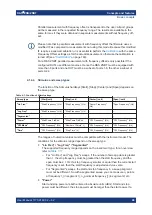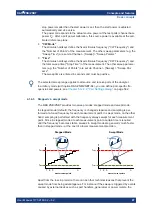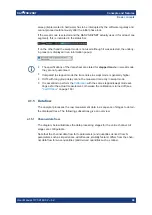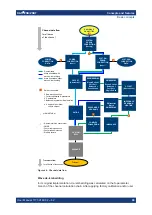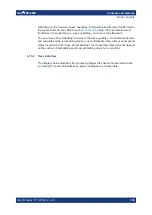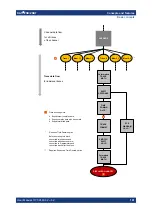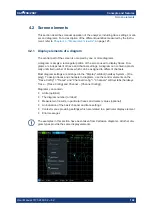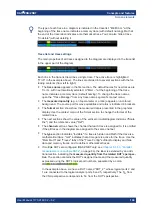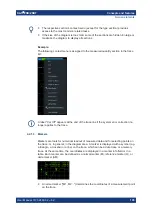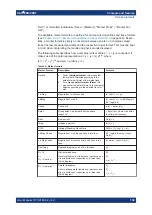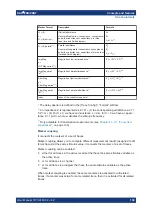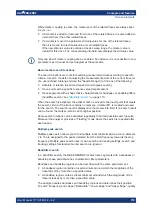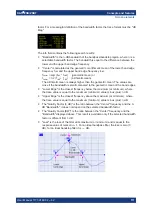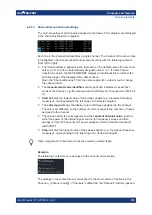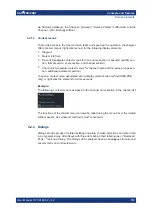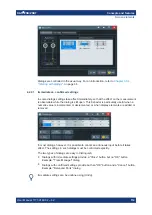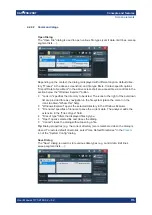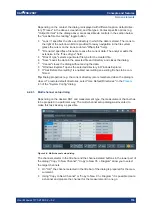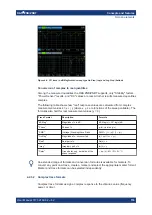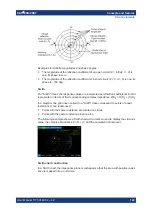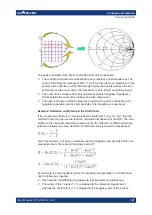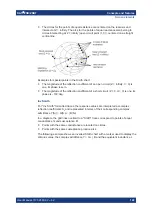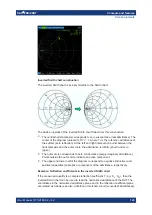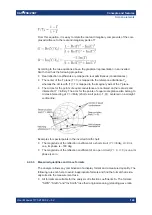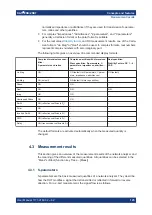
Concepts and features
R&S
®
ZNB/ZNBT
110
User Manual 1173.9163.02 ─ 62
While marker coupling is active, the marker sets of the related traces are always kept
in sync, i.e.:
●
If a marker is added to (removed from) one of the related traces, it is also added to
(removed from) the other related traces.
●
If a marker is moved to a particular stimulus value for one of the related traces,
then it is moved to this stimulus value for all related traces.
If the new stimulus value is outside a trace's sweep range, the marker value is
invalid for this trace. The corresponding info field only displays the stimulus value.
Only one kind of marker coupling can be enabled. For instance it is not possible to cou-
ple markers per channel and per diagram at the same time.
Basic marker search functions
The search functions are tools for searching measurement data according to specific
criteria. A search consists of analyzing the measurement points of the current trace (or
of a user-defined subrange termed the "Search Range") to find one of the following:
●
Absolute or relative (local) maxima and minima (peak search).
●
Trace points with a specific response value (target search).
●
Trace segments with a shape that is characteristic for bandpass or bandstop filters
(bandfilter search); see
When the search is activated, the active marker is moved to the (next) point that meets
the search criteria. If the trace contains no markers, a marker M1 is created and used
for the search. The search result is displayed in the marker info field. If no search result
can be found, the marker remains at its original position.
Some search functions can be activated repeatedly to find all possible search results.
Moreover the analyzer provides a "Tracking" mode where the search is repeated after
each sweep.
Multiple peak search
Multiple peak search allows you to find multiple local minima/maxima at once. Markers
1 to 10 are assigned to the peaks detected from the start frequency towards the stop
frequency. Multiple peak search uses its own search and tracking settings; search and
tracking settings for standard marker search are ignored.
Bandfilter search
In a bandfilter search, the R&S
ZNB/ZNBT locates trace segments with a bandpass or
bandstop shape and determines characteristic filter parameters.
Bandpass and bandstop regions can be described with the same parameter set:
●
A bandpass region contains a local maximum around which the magnitude of the
trace falls off by more than a specified value.
●
A bandstop region contains a local minimum around which the magnitude of the
trace increases by more than a specified value.
The analyzer locates bandpass and bandstop regions and determines their position
("Center" frequency) and shape ("Bandwidth", "Lower Edge" and "Upper Edge", quality
Screen elements

